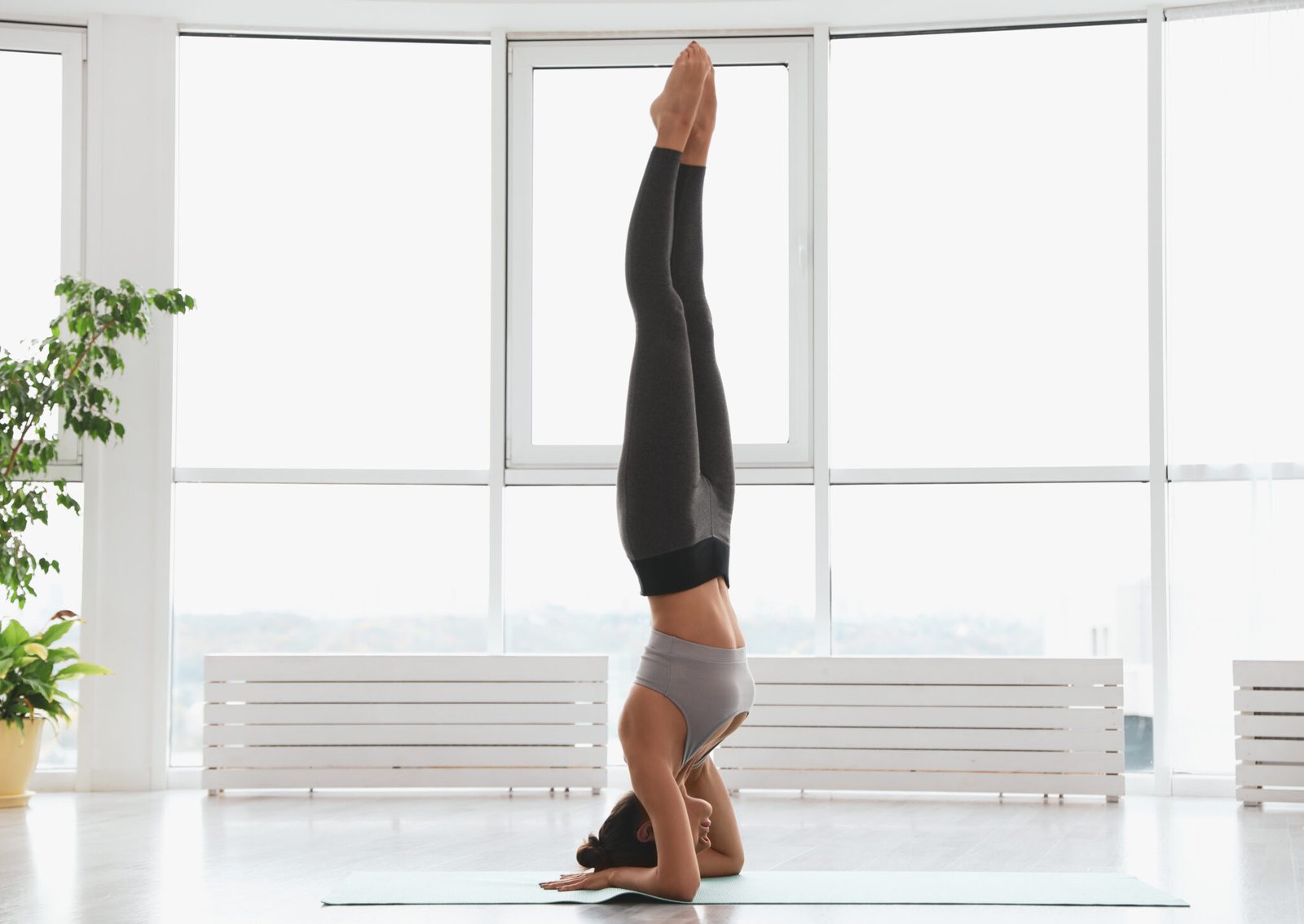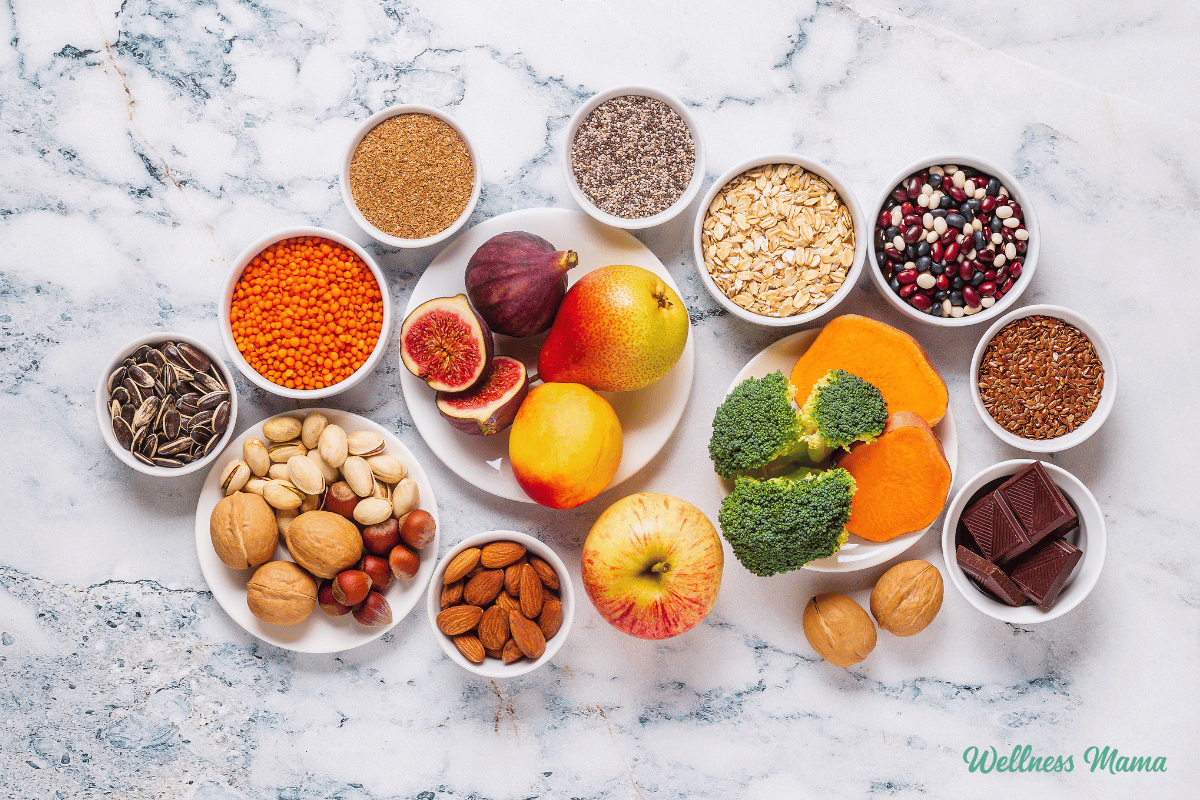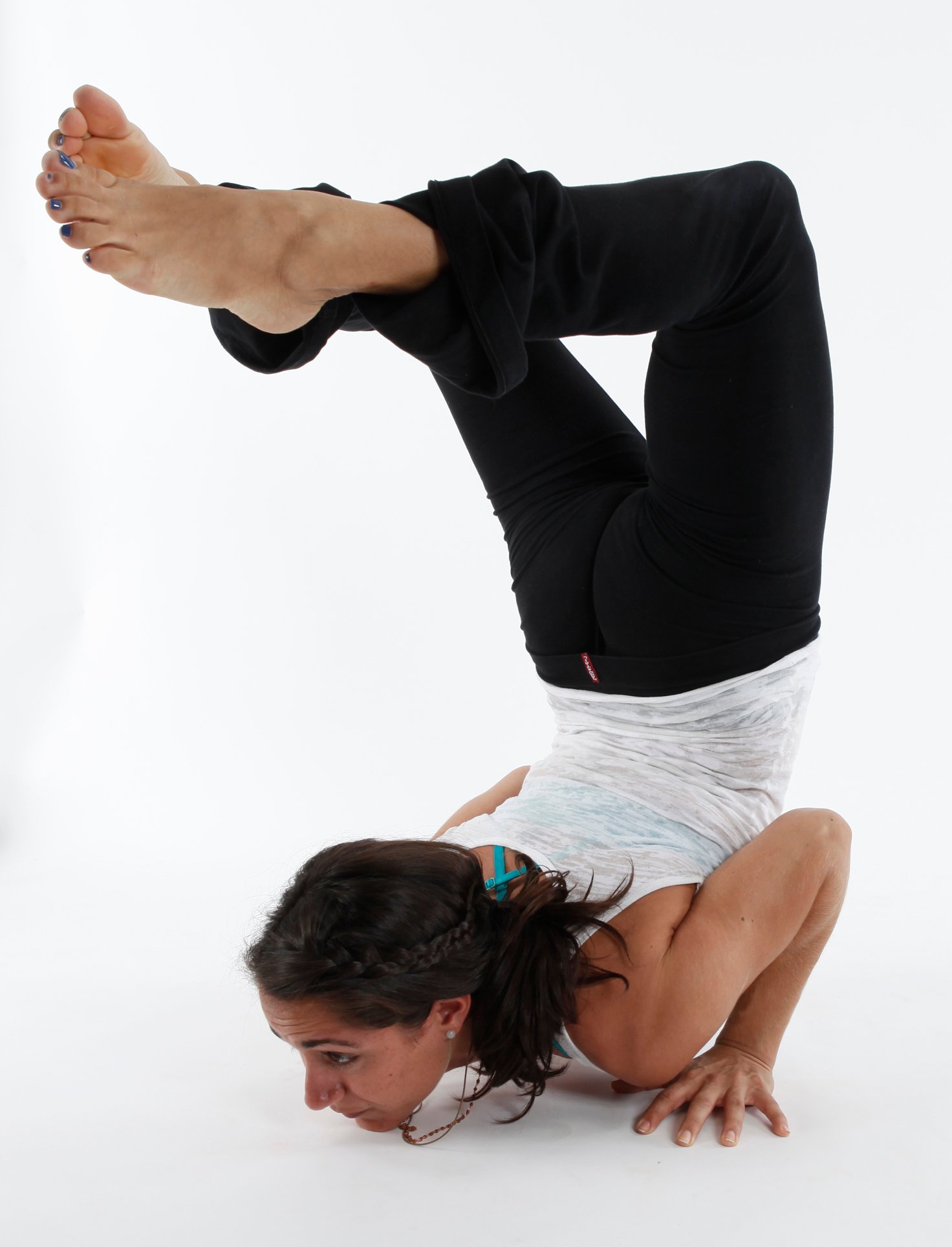Embracing the Art of Yoga Arm Balances
Yoga, an ancient practice rooted in the harmonious blend of mind, body, and spirit, offers a plethora of poses that challenge and nurture us. Among these, the art of arm balances holds a special place, epitomizing the blend of strength, flexibility, and mental focus. In this spirit, we delve into the Side Crow Pose, a dynamic and transformative asana that extends beyond physical prowess to touch the depths of mental resilience and spiritual balance.
Side Crow Pose: A Confluence of History and Modern Practice
The Side Crow Pose, known as Parsva Bakasana in Sanskrit, is more than just a physical posture; it’s a historical beacon and a cultural treasure in the world of yoga. This pose, while being a variant of the traditional Crow Pose, carries its own unique significance and challenges. It not only represents the evolution of yoga through centuries but also stands as a testament to the enduring relevance of yoga in contemporary wellness practices.
Anticipated Benefits: A Holistic Approach to Well-being
Engaging with the Side Crow Pose opens doors to a multitude of benefits. Physically, it’s a powerful tool for strengthening the core, arms, and shoulders, while also enhancing balance and concentration. Mentally, it serves as a catalyst for stress reduction, fostering a sense of inner peace and mental clarity. The fusion of these physical and mental benefits contributes to long-term health and wellness, embodying the true essence of yoga as a comprehensive journey towards holistic well-being.
Understanding Side Crow Pose: A Deep Dive into the Asana
The journey into yoga is marked by the exploration of poses that challenge and enlighten. The Side Crow Pose (Parsva Bakasana) stands as a beacon of balance and strength, inviting practitioners to explore the depths of their physical and mental capabilities.
Unraveling the Mystique of Side Crow Pose
The Side Crow Pose is a sophisticated arm balance that epitomizes the fusion of strength, flexibility, and focus. In this pose, practitioners balance their body on the arms, with the torso elegantly twisted and the legs intricately stacked to one side. This configuration not only targets the core muscles but also engages the arms, shoulders, and hips, providing a holistic workout. The pose’s unique structure makes it a visually captivating and physically rewarding asana, offering insights into the practitioner’s bodily alignment, control, and symmetry.
Crow vs. Side Crow: A Comparative Study in Balance and Strength
While the Crow Pose is often a starting point for arm balancing in yoga, the Side Crow elevates this experience by introducing a twist that challenges the practitioner’s equilibrium and core strength in novel ways. This lateral balance, unlike the more straightforward balance in Crow Pose, requires a nuanced engagement of the oblique muscles, enhancing proprioception and body awareness. The Side Crow, with its added complexity, serves as a stepping stone for practitioners looking to advance their practice, providing a clear pathway of progression from basic to more intricate arm balances.
Tracing the Evolution of a Yoga Classic
The Side Crow Pose, while a relatively modern addition to the yoga repertoire, embodies the spirit of innovation that has always been a hallmark of yoga’s evolution. Arm balances, traditionally, were not just physical feats but also spiritual endeavors, symbolizing the balance between earthly strength and spiritual grace. As yoga’s popularity soared globally, poses like the Side Crow emerged, blending traditional wisdom with contemporary needs, thereby keeping the practice both relevant and challenging for practitioners across ages and cultures.
The Role in Modern Yoga Practice: A Staple in Contemporary Sequences
In modern yoga studios, the Side Crow Pose is revered for its ability to push boundaries and encourage self-exploration. It’s a pose that speaks to the adventurous spirit of contemporary practitioners, offering a mix of physical rigor and mental discipline. The Side Crow is often incorporated into flow sequences to enhance dynamism and to offer a benchmark for progress in one’s yoga journey. It not only improves physical attributes like balance, strength, and flexibility but also promotes mental attributes such as concentration, determination, and patience, making it a comprehensive tool for overall personal development.
Benefits of Side Crow Pose: Transforming Body and Mind
The Side Crow Pose is not just a physical posture; it’s a gateway to a myriad of benefits that touch every aspect of well-being. This arm balance, demanding yet gratifying, offers rewards that are both immediate and enduring, physically and mentally.
Physical Benefits: Fortifying the Body’s Framework
Strengthening Core Muscles: The Side Crow Pose acts as a dynamic core stabilizer. It not only targets the superficial muscles but also engages the deeper core muscles, essential for maintaining good posture and preventing injuries in daily activities.
Enhancing Arm and Shoulder Strength: As practitioners support their body weight in this pose, it effectively strengthens the arms and shoulders. This enhanced strength is not just beneficial for yoga but also aids in performing everyday tasks with greater ease and less fatigue.
Improving Balance and Focus: This pose’s requirement for balance trains the body to maintain stability in various positions, which is beneficial in other sports and physical activities. The focus needed to hold the pose also sharpens proprioception, enhancing body awareness and coordination.
Mental and Emotional Benefits: Cultivating Inner Peace and Clarity
Stress Reduction: The Side Crow Pose, by necessitating focused attention, creates a meditative state that can significantly lower stress levels. This reduction in stress contributes to better emotional well-being, leading to a more balanced and positive outlook on life.
Enhanced Concentration and Mental Clarity: Regular practice of this pose improves cognitive functions such as attention span, memory, and problem-solving skills. This mental clarity and heightened concentration can have a profound impact on personal and professional life, aiding in better decision-making and increased productivity.
Long-Term Health Implications: A Commitment to Well-being
Overall Impact on Physical and Mental Wellness: Consistently practicing the Side Crow Pose can lead to remarkable improvements in overall fitness and health. Physically, it builds strength, enhances flexibility, and improves endurance. Mentally, it promotes resilience, reduces anxiety, and fosters a sense of mental equilibrium. This comprehensive approach to wellness, encompassing both physical and mental health, underscores the value of integrating yoga, and specifically poses like the Side Crow, into one’s lifestyle for lasting well-being and vitality.
Preparatory Poses: Laying the Foundation for Side Crow
Embarking on the journey to master the Side Crow Pose requires a solid foundation in several key areas of physical fitness. The following preparatory poses are specifically chosen to build the requisite strength, flexibility, and balance, ensuring a gradual and safe approach to Parsva Bakasana.
Fundamental Poses for Building Strength
Plank Pose (Phalakasana): This pose is a powerhouse for core strengthening, essential for the Side Crow. It also fortifies the arms and shoulders, providing the endurance needed for arm balances.
Four-Limbed Staff Pose (Chaturanga Dandasana): A vital part of the Sun Salutation sequence, this pose intensely works the arms and core, mirroring the arm strength required in the Side Crow.
Boat Pose (Navasana): Ideal for core conditioning, this pose strengthens the deep abdominal muscles, improving posture and balance.
Low Plank (Dolphin Plank): This variation of the Plank focuses on the shoulders and core, enhancing stability and endurance.
Dolphin Pose: Strengthening the shoulders, arms, and core, this pose is a perfect precursor to arm balances like the Side Crow.
Flexibility Enhancing Poses
Downward-Facing Dog (Adho Mukha Svanasana): A staple in yoga practice, it stretches the entire back of the body, while strengthening the arms and legs, creating a balance between flexibility and strength.
Warrior Poses (Virabhadrasana Series): These poses improve leg strength and hip flexibility, which are crucial for maintaining balance and stability in arm balances.
Extended Triangle Pose (Utthita Trikonasana): This pose opens up the hips and stretches the sides of the body, enhancing the flexibility needed for the twisting element in the Side Crow.
Half Pigeon Pose (Ardha Kapotasana): Excellent for opening the hips and stretching the thighs, glutes, and groin, this pose prepares the lower body for the complexities of arm balances.
Balancing Poses for Beginners
Tree Pose (Vrikshasana): This balancing pose teaches the fundamentals of weight distribution and focus, essential for arm balances.
Eagle Pose (Garudasana): Beyond balance, this pose teaches how to maintain stability amidst complexity, a skill vital for the Side Crow.
Chair Pose (Utkatasana): While primarily a strength-building pose, it also challenges the practitioner’s balance and stability, preparing them for more advanced balances.
Warrior III (Virabhadrasana III): This pose combines strength, flexibility, and balance, offering a comprehensive preparation for the Side Crow, as it requires focus, leg strength, and core stability.
Step-by-Step Instructions: Mastering the Side Crow Pose
For beginners embarking on the journey of the Side Crow Pose, detailed guidance is crucial. This step-by-step breakdown aims to provide clear instructions, ensuring a safe and effective practice.
Initial Positioning and Alignment for the Side Crow Pose
Start in a Squat: Begin with your feet together, squatting down with your knees wide.
Place Hands on the Mat: Place your hands firmly on the mat, shoulder-width apart, spreading your fingers wide for a stable base.
Align Wrists and Shoulders: Ensure your wrists are directly under your shoulders, creating a strong foundation.
Transitioning into the Side Crow Pose
Twist Your Torso: From the squat, twist your torso to the right, bringing your left elbow to the outside of your right knee. Keep your palms pressed together to help deepen the twist.
Position Your Elbows: Place your elbows as close to your hip as possible, with the left elbow touching the right knee, and the right elbow extending towards your hip.
Shift Your Weight Forward: Lean forward slowly, transferring your weight onto your hands. Keep your gaze slightly forward, not down, to maintain balance.
Lift Your Feet: As you shift your weight, start lifting your feet off the ground, bringing your heels close to your buttocks.
Maintaining the Side Crow Pose
Engage Your Core: Tighten your abdominal muscles to help maintain balance and stability.
Focus on Your Breath: Maintain steady, even breaths. Inhale and exhale deeply to stay focused and balanced.
Keep Your Gaze Fixed: Find a spot on the floor and focus your gaze there to help maintain balance.
Hold the Pose: Try to hold the pose for a few breaths, gradually increasing the duration as you gain confidence and strength.
Tips for Stability and Safety
Use a Cushion or Block: When starting, use a cushion or block under your face for safety as you learn to balance.
Avoid Rushing: Move into the pose slowly to maintain control and prevent injury.
Practice Regularly: Consistency is key. Regular practice will improve strength, flexibility, and balance over time.
Listen to Your Body: Pay attention to any signals of discomfort or strain. If a position feels painful, ease out of the pose and try again later.
Common Challenges and How to Overcome Them in Side Crow Pose
Transitioning into and mastering the Side Crow Pose can present a few common challenges. Understanding these obstacles and knowing how to navigate them is crucial for a successful and safe yoga practice.
Overcoming Balance Issues
Firstly, balance is often the most significant hurdle when learning the Side Crow Pose. To address this, start by practicing balancing poses such as Tree Pose (Vrikshasana) and Warrior III (Virabhadrasana III). These poses help in developing a sense of stability and body awareness. Additionally, focus on engaging your core during all yoga practices; a strong core is essential for maintaining balance in the Side Crow. Moreover, practicing the pose near a wall for support can provide a sense of security as you build confidence in your balancing abilities.
Tackling Strength Limitations
Secondly, strength limitations, especially in the arms and core, can be a barrier. To overcome this, incorporate strength-building exercises into your routine. Poses like Plank Pose (Phalakasana), Four-Limbed Staff Pose (Chaturanga Dandasana), and Boat Pose (Navasana) are excellent for building the necessary strength. Furthermore, start with simpler arm balances like the Crow Pose before progressing to the Side Crow. This gradual approach allows your body to build the required strength over time, reducing the risk of injury.
Addressing Flexibility Constraints
Lastly, flexibility, particularly in the hips and spine, can impact your ability to perform the Side Crow. To improve flexibility, incorporate poses like Downward-Facing Dog (Adho Mukha Svanasana), Pigeon Pose (Kapotasana), and Seated Forward Bend (Paschimottanasana) into your practice. These stretches help loosen tight muscles and increase your range of motion. Additionally, consistent practice and patience are key, as flexibility improves over time. Remember, it’s important not to force your body into positions that feel uncomfortable or painful.
Variations of Side Crow Pose: Catering to All Levels
Adapting the Side Crow Pose to suit different skill levels not only makes the pose more accessible but also adds diversity and challenge to your practice. Let’s explore various modifications, starting from beginner-friendly versions to advanced adaptations.
Beginner-Friendly Variations
Initially, beginners might find the full expression of the Side Crow Pose quite challenging. A great way to start is by keeping one foot on the ground as a support while lifting the other. This modification helps in understanding the weight distribution and balance required for the pose without the full commitment. Another option is to practice near a wall, using it as a support for your back or hips. This gives you the confidence to experiment with the balance without the fear of falling.
Intermediate Variations for Enhanced Challenge
Subsequently, for those who have mastered the basic form and seek more challenge, intermediate variations are the next step. One such variation involves extending one leg outwards while keeping the other bent, which intensifies the engagement of the core and balance. Another option is to try transitioning from the Side Crow into another pose, like the Eka Pada Koundinyasana, which requires more strength and flexibility, thus enhancing the complexity of the practice.
Advanced Modifications for Experienced Practitioners
Finally, for advanced practitioners looking to deepen their practice, there are several modifications. One challenging variation is lifting into the Side Crow from a seated position, which demands significant strength and control. Another advanced modification is holding the pose for an extended period or incorporating it into a flow with other advanced arm balances and inversions. These modifications not only test physical limits but also mental focus and endurance.
Counterposes and Cool Down: Essential Steps Post-Side Crow
After practicing the Side Crow Pose, it’s important to engage in counterposing and cooling down to ensure a balanced and safe yoga practice. Let’s delve into the significance of these steps and explore effective techniques.
Importance of Counterposing
First and foremost, counterposing is crucial after performing intense poses like the Side Crow. It helps in balancing the body by stretching muscles that were contracted during the pose. This not only prevents muscle fatigue and soreness but also aids in maintaining flexibility and range of motion.
List of Effective Counterposes to Side Crow
Subsequently, effective counterposes specifically target areas worked in the Side Crow. These include:
Child’s Pose (Balasana): A gentle stretch for the back and shoulders, helping to release any tension built up during the arm balance.
Seated Forward Bend (Paschimottanasana): This pose stretches the spine and hamstrings, countering the compression experienced in the Side Crow.
Camel Pose (Ustrasana): An excellent counterpose for opening the front body, particularly the chest and abdomen.
Supine Spinal Twist (Supta Matsyendrasana): This twist helps in realigning and relaxing the spine and is particularly soothing after the twisting involved in the Side Crow.
Cooling Down: Essential Stretches after Side Crow
Moreover, cooling down with essential stretches is vital to bring the body back to a state of rest. Gentle stretches like the Legs-Up-the-Wall Pose (Viparita Karani) and Cat-Cow Stretch (Marjaryasana-Bitilasana) are excellent for calming the nervous system and reducing the heart rate gradually. These stretches facilitate the removal of lactic acid build-up in the muscles, reducing the risk of cramps or stiffness.
Relaxation Techniques Post-Practice
Finally, concluding your practice with relaxation techniques ensures a holistic yoga experience. Techniques such as deep breathing, guided meditation, or Savasana (Corpse Pose) help in integrating the benefits of the practice both physically and mentally. They allow the body to absorb the practice’s effects, leaving you refreshed and rejuvenated.
Embracing the Journey: A Final Note on Side Crow Mastery
In this final reflection on the Side Crow Pose, we focus on the importance of perseverance, the value of personal growth, and the power of motivation in your yoga practice.
The Power of Perseverance in Yoga
Consistent practice is the cornerstone of progress in yoga. The challenges faced in mastering the Side Crow Pose are not just physical hurdles but opportunities for growth and learning. Regular practice not only enhances your skills in this specific pose but also contributes to a deeper understanding and connection with your body.
Celebrating Personal Growth and Awareness
Yoga is a journey of self-discovery and personal evolution. It’s crucial to listen to your body and respect its limits, making mindful adjustments as needed. Every step forward, no matter how small, is a cause for celebration. Yoga is not about comparison but about personal growth and enhancing body awareness.
Finding Motivation in Your Yoga Journey
Let your experience with the Side Crow Pose serve as a source of inspiration. It symbolizes your capacity for resilience and adaptation. Embrace the strength and peace you cultivate through your practice, and let these qualities infuse your daily life. Remember, each moment spent on the mat is a step towards a more balanced, healthier, and fulfilled self.
Additional Resources: Expanding Your Yoga Horizons
To further support and enrich your yoga journey, consider these valuable resources:
In-Depth Exploration on Advanced Yoga: Start with our comprehensive article, “Advanced Yoga Poses: Unlock New Levels of Discipline and Focus”, available at Daily Dose of Fit. This piece offers insightful guidance on advanced yoga techniques and practices, complementing the information in this article.
Side Crow Pose Video Tutorial: Enhance your understanding of the Side Crow Pose with this detailed video tutorial by Briohny Smyth: How to do Side Crow Pose | Parsva Bakasana Tutorial with Briohny Smyth. The step-by-step instructions are especially helpful for beginners and those looking to refine their technique.
Recommended Books: Deepen your knowledge with books such as “Rest + Calm” by Paula Hines, “Your Yoga series” by Bernie Clark, and “Yoga for Bendy People” by Libby Hinsley, which provide a range of insights from restorative techniques to anatomical understanding.
These resources offer a well-rounded approach to enhancing your yoga practice, providing both theoretical knowledge and practical application.
Related Products
-
Sale!

aSquared Nutrition Nicotinamide with Resveratrol – 120 Veggie Capsules – Vitamin B3 500mg (Niacinamide Flush Free) – Supplement Pills to Support NAD, Skin Cell Health & Energy
Original price was: $34.95.$27.95Current price is: $27.95. Buy Now -

Hemp Gummies Hemp, Tested by 3 rd Party for Adult 2432 0302
$8.99 Buy Now -

HUM Daily Cleanse Acne Supplements – Support for Clear Skin & Improved Digestion with Organic Algae, Detoxifying Herbs, Vitamins & Minerals – Skin Supplement for Women and Men (60 Vegan Capsules)
$25.99 Buy Now











